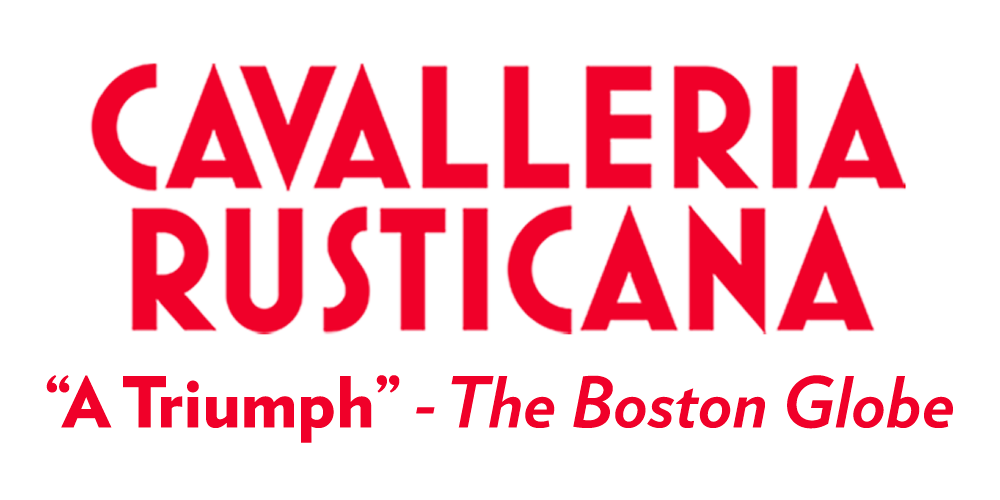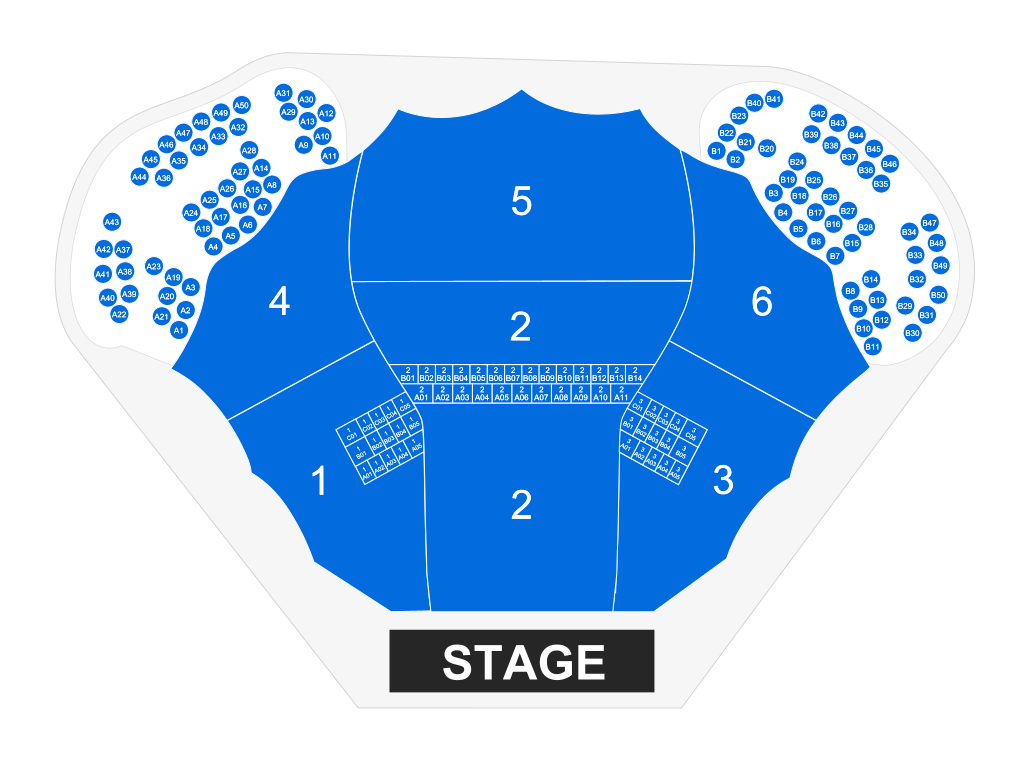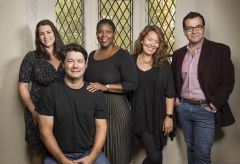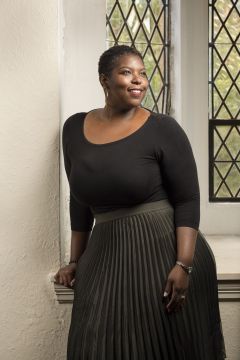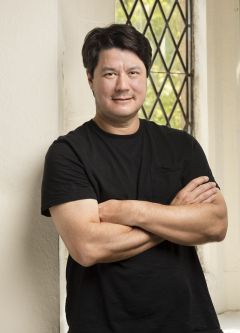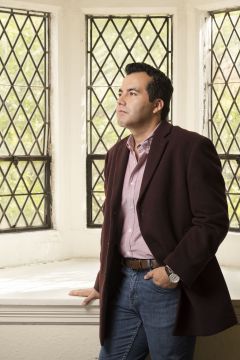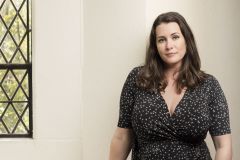Cavalleria Rusticana
OCT 1 & 3 | 2021
Music by Pietro Mascagni
Libretto by Giovanni Targioni-Tozzetti and Guido Menasci
Sung in Italian with English surtitles
Approximate Running Time: 1 hour 10 minutes, no intermission
Join us for Boston Lyric Opera’s first production of Cavalleria Rusticana, Mascagni’s verismo tale of love, betrayal, and death in a small Sicilian village. Experience the thrill of live, large-scale opera together in the open air at Leader Bank Pavilion on Boston’s waterfront.
On Easter Sunday morning in a 19th century Sicilian village, Turridu sings of his ardent love for Lola. Turridu, a young villager, had once been engaged to Lola, but returned from military service to find that she had married Alfio, a carter in the town. Heartbroken, Turridu retaliated by seducing the peasant girl, Santuzza, but also still maintains an affair with Lola.
Later that morning, Santuzza, tearful and distressed, approaches the tavern of Turridu’s mother, Lucia. Santuzza demands to know where Turridu has gone, but Mother Lucia is reluctant to divulge his whereabouts. Lucia claims that her son is out of town buying wine, but Santuzza is convinced that Turridu has been seen nearby in the village at night.
Lola’s husband Alfio then arrives, singing in celebration of the virtues of his life as a carter and his faith in his wife’s fidelity. Alfio asks Mother Lucia if she has any vintage wine, and Lucia again maintains that Turridu has gone to get more. Alfio replies doubtfully, claiming he has seen Turridu near his house that morning. Lucia appears puzzled, but is quickly hushed by Santuzza; soon after, church bells ring, breaking up the conversation and calling the villagers to Mass.
Santuzza remains outside in the square with Lucia, and reveals that she knows about Turridu’s affair with Lola. Santuzza expresses that she feels both abandoned by Turridu and condemned by God. Mother Lucia heads into the church and prays for Santuzza in pity. Turridu finally appears, and Santuzza seizes the opportunity to confront him. She demands that he admit his infidelity and his love for Lola, but Turridu denies it all and casts her aside. Having spotted Lola heading into the church, Turridu follows her in and leaves Santuzza alone in the town square.
Alfio now arrives, looking for Lola, and finds a furious Santuzza following her encounter with Turridu. In the heat of her rage, Santuzza reveals to Alfio that Turridu and Lola are engaged in an affair. Alfio is predictably enraged, and swears revenge on Turridu, while Santuzza immediately regrets her disclosure, fearing the violence that might ensue.
The villagers congregate at Mother Lucia’s tavern following Mass. Turridu is delighted to have Lola at his side, and leads the merriment with a drinking song. Alfio arrives and greets the villagers. Turridu offers Alfio wine, but Alfio sternly rejects the gesture. The women in the tavern sense impending trouble, and hurry Lola away from the scene. The two men have a tense exchange, and Turridu bites Alfio’s ear, signaling a challenge to a duel. Alfio and Turridu agree to meet outside the village to settle their dispute in a knife fight.
Now alone with his mother, Turridu implores Lucia to take care of Santuzza if he doesn’t survive the duel. He rushes off, leaving Lucia and Santuzza to anxiously await the outcome. A crowd forms, and after noises of violence and confusion, a woman declares that Turridu has been killed.

Michelle Johnson
Santuzza
Michelle Johnson | Santuzza
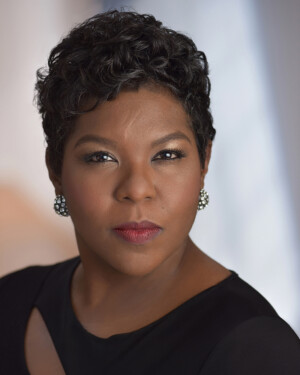
Soprano Michelle Johnson is a Grand Prize Winner of the Metropolitan Opera National Council Auditions, whose recent engagements include a debut with Opera Tampa in the title role of Verdi’s Aida, a return to Chicago Opera Theater as Zemfira in Aleko, a featured soloist performance with Madison Symphony Orchestra, a debut with Waterbury Symphony for their Holiday Pops, and a return to Chautauqua to perform Strauss’ Vier letzte Lieder with Chautauqua Symphony Orchestra. Ms. Johnson’s upcoming performances include her Chamber Orchestra of Philadelphia debut, a role and company debut at Opera Columbus as the titular lead in Puccini’s Tosca, the title role in Aida with Opera Grand Rapids, and her performance of Mimi in La bohème with both Columbus Symphony and Florentine Opera. In summer of 2022, Ms. Johnson will make her debut with Des Moines Metro Opera as Bess in Porgy and Bess. She is a graduate of the Academy of Vocal Arts in Philadelphia.

Adam Diegel
Turiddu
Adam Diegel | Turiddu
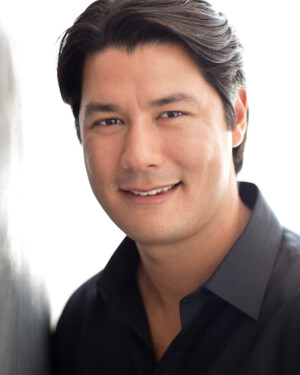
Korean American tenor Adam Diegel received international critical acclaim for his powerful performance of Cavaradossi in Tosca at Glimmerglass Opera, reprising the performance at Palm Beach Opera and The National Theatre in Budapest. He made his Metropolitan Opera début as Froh in Robert Lepage’s landmark production of Das Rheingold conducted by Maestro James Levine and returned to the famed house as Pinkerton in Madama Butterfly under Plácido Domingo and Ismaele in Nabucco under Paolo Carignani. His inspired performance as Don José in Carmen at English National Opera earned rave reviews, and other international appearances include Lithuanian National Opera, China’s Guangzhous Opera House, and Opéra National de Lyon. This season, Mr. Diegel makes several exciting role debuts as Narraboth in Salomé with The Atlanta Opera, Tenor soloist in Mahler’s Lied von der Erde with Park Ridge Civic Orchestra, Radames in Aida with Opera Tampa, Manrico in Il Trovatore with Pensacola Opera, and a reprisal of Pinkerton in Madama Butterfly with Nashville Opera and the Southwest Florida Symphony

Nina Yoshida Nelsen
Mamma Lucia
Nina Yoshida Nelsen | Mamma Lucia
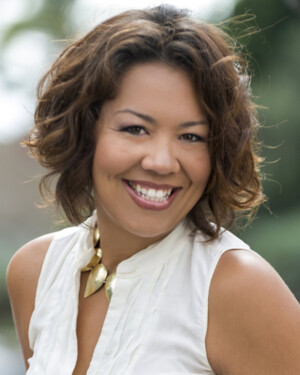
Mezzo soprano Nina Yoshida Nelsen makes her Boston Lyric Opera debut as Mama Lucia in Cavalleria rusticana, adding to an impressive lineup of performances scheduled for the 2021-2022 season, including her Bard Opera debut singing Mother Chen in Huang Ruo’s An American Soldier, a return to Opera Santa Barbara for a double bill of El Amor Brujo and Frugola in Il Tabarro, a Chicago Opera Theater debut singing Queen Queen Sophine in Mark Adamo’s Becoming Santa Claus, Mama in Jack Perla’s An American Dream at Kentucky Opera (a role she debuted in 2019 at Lyric Opera Chicago), and the Alto Solo in Beethoven’s 9th Symphony with the Rhode Island Philharmonic. Ms. Nelsen has performed two world premieres at Houston Grand Opera, and premiered Jack Perla’s An American Dream at Seattle Opera. Equally comfortable on the symphonic stage, she has performed with notable orchestras around the world, and made her European debut singing Suzuki in Madama Butterfly at Royal Albert Hall in London. A Santa Barbara native, Ms. Nelsen resides with her husband Jeff and their two sons in Bloomington, Indiana.

Javier Arrey
Alfio
Javier Arrey | Alfio
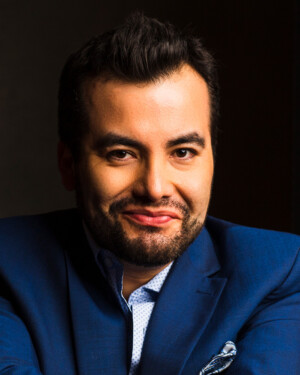
One of opera’s most sought-after and versatile rising baritones, Chilean baritone Javier Arrey recently made two La Bohème debuts: one at the Metropolitan Opera as Schaunard and the other at Wiener Staatsoper as Marcello. Mr. Arrey’s other recent performances include Garibaldo in Rodelinda and Sharpless in Madama Butterfly at the Teatro Municipal de Santiago, Valdeburgo in La Straniera and Riccardo in I Puritani at Washington Concert Opera, and Marcello in La Bohème at the Washington National Opera (WNO). He can be heard as Lescaut on the CD recording of Puccini’s “Manon Lescaut for Decca Classics” alongside Andrea Bocelli and Ana Maria Martinez. He is a 2017 recipient of Chile’s “Congressional Medal of Honor,” recognizing his artistic career and efforts to bring Opera to populations without access to live performances. A graduate of WNO’s Domingo-Cafritz Young Artist program, Mr. Arrey plans to return to the Metropolitan Opera House for a production of Puccini’s Turandot.

Chelsea Basler
Lola
Chelsea Basler | Lola

Grammy-nominated soprano Chelsea Basler’s most recent appearance with Boston Lyric Opera was as the voice of Madeline in BLO’s animated production of “The Fall of the House of Usher” on operabox.tv. Ms. Basler has enjoyed a strong relationship with the company, first as an Emerging Artist in the 2013-2014 season, then receiving critical acclaim for her role debut as Micaëla in the 2016 Calixto Bieito production of Carmen. In 2019, Ms. Basler sang the role of Moira for BLO’s East Coast premiere of Poul Ruders’ The Handmaid’s Tale, and made a company debut with Boston Midsummer Opera as Clorinda in La Cenerentola. Also that year she joined the Metropolitan Opera roster, covering Poussette in Manon, rejoined BLO to sing Mary Johnson in the New England Premiere of Fellow Travelers, and made her Boston Youth Symphony Orchestra debut as the High Priestess in Aida. Ms. Basler’s credits include acclaimed debuts at Nashville Opera and Pasadena Opera, concert performances with Omaha Symphony and Boston’s Mercury Orchestra, and success on the vocal competition circuit, having taken first place in the National Opera Association’s prestigious Carolyn Bailey and Dominick Argento Vocal Competition.

Victoria L. Awkward
Dancer
Victoria L. Awkward | Dancer
 Boston dancer Victoria Lynn Awkward is a professional artist, educator and the Director of VLA DANCE, which received the 2021 – 2022 Boston Foundation Live Arts Boston Grant and the 2020-2021 Boston DanceMaker Residency from the Boston Center for the Arts and Boston Dance Alliance, the Art for Racial Justice Grant from Cambridge Arts, and the 2021 Mass MoCa Assets for Artists Program. Victoria earned a degree in Visual and Performing Arts Education from Goucher College, where she danced for the Goucher Repertory Dance Ensemble and performed in works by Sidra Bell, Christian Von Howard, Helen Simoneau, and others. Professionally, she has performed with Ashani Dances, Attn: Dance, The Davis Sisters, Heather Stewart, Jenna Pollack and Ruckus Dance. Victoria has been an Institute of Contemporary Art Dance Fellow, a guest teacher at Salem State University, and is currently the Head Dance Coach at Middlesex School in Concord.
Boston dancer Victoria Lynn Awkward is a professional artist, educator and the Director of VLA DANCE, which received the 2021 – 2022 Boston Foundation Live Arts Boston Grant and the 2020-2021 Boston DanceMaker Residency from the Boston Center for the Arts and Boston Dance Alliance, the Art for Racial Justice Grant from Cambridge Arts, and the 2021 Mass MoCa Assets for Artists Program. Victoria earned a degree in Visual and Performing Arts Education from Goucher College, where she danced for the Goucher Repertory Dance Ensemble and performed in works by Sidra Bell, Christian Von Howard, Helen Simoneau, and others. Professionally, she has performed with Ashani Dances, Attn: Dance, The Davis Sisters, Heather Stewart, Jenna Pollack and Ruckus Dance. Victoria has been an Institute of Contemporary Art Dance Fellow, a guest teacher at Salem State University, and is currently the Head Dance Coach at Middlesex School in Concord.

Michayla Kelly
Dancer
Michayla Kelly | Dancer
 Cape Cod native and Boston-based dance artist Michayla Kelly performs in contemporary, modern, ballet, and opera works. She danced professionally with José Mateo Ballet Theatre, Odyssey Opera, Pat Catterson, and Boston’s emerging contemporary dance company VLA DANCE, where she is Company Manager. Kelly taught dance at Franklin School for the Performing Arts and Reaching Heart Ballet School, and continues to work as an educator with VLA DANCE. She attended Goucher College in Maryland, graduating summa cum laude with a double major in Dance and Mathematics. She received the Friends of Goucher Dance Prize for Outstanding Achievement, the Fine and Performing Arts Scholarship for Dance, and the Ruth Baird Prize, among others. Kelly is currently the Research Lead for the nonprofit Dance Data Project®, which advocates for gender equity in the dance field.
Cape Cod native and Boston-based dance artist Michayla Kelly performs in contemporary, modern, ballet, and opera works. She danced professionally with José Mateo Ballet Theatre, Odyssey Opera, Pat Catterson, and Boston’s emerging contemporary dance company VLA DANCE, where she is Company Manager. Kelly taught dance at Franklin School for the Performing Arts and Reaching Heart Ballet School, and continues to work as an educator with VLA DANCE. She attended Goucher College in Maryland, graduating summa cum laude with a double major in Dance and Mathematics. She received the Friends of Goucher Dance Prize for Outstanding Achievement, the Fine and Performing Arts Scholarship for Dance, and the Ruth Baird Prize, among others. Kelly is currently the Research Lead for the nonprofit Dance Data Project®, which advocates for gender equity in the dance field.
Marissa Molinar
Dancer
Marissa Molinar | Dancer
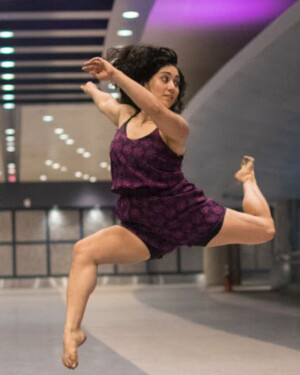 Contemporary dancer Marissa Molinar is founder and director of Midday Movement Series, a Cambridge-based grassroots initiative cultivating new generations of dance leaders. She holds a Bachelor in Environmental Science from Brown University with a focus in Urban Conservation and Environmental Justice, and a certificate in Contemporary Dance from the Professional Training Program at Gibney Dance in New York City. Currently, Molinar is a performer with Cambridge dance company Ruckus Dance, choreographed and directed by Michael Figueroa, and with Nathan Trice / RITUALS dance theater in Brooklyn, New York. Additionally, she serves as Coordinator for the Network for Arts Administrators of Color at ArtsBoston.
Contemporary dancer Marissa Molinar is founder and director of Midday Movement Series, a Cambridge-based grassroots initiative cultivating new generations of dance leaders. She holds a Bachelor in Environmental Science from Brown University with a focus in Urban Conservation and Environmental Justice, and a certificate in Contemporary Dance from the Professional Training Program at Gibney Dance in New York City. Currently, Molinar is a performer with Cambridge dance company Ruckus Dance, choreographed and directed by Michael Figueroa, and with Nathan Trice / RITUALS dance theater in Brooklyn, New York. Additionally, she serves as Coordinator for the Network for Arts Administrators of Color at ArtsBoston.
David Angus
Conductor
David Angus | Conductor
 Now in his tenth year as Boston Lyric Opera’s Music Director, David Angus recently navigated new and innovative concepts of presenting opera online, serving as Music Director and conductor for the critically-acclaimed productions of desert in and The Fall of the House of Usher.
Now in his tenth year as Boston Lyric Opera’s Music Director, David Angus recently navigated new and innovative concepts of presenting opera online, serving as Music Director and conductor for the critically-acclaimed productions of desert in and The Fall of the House of Usher.
In addition to his ongoing work with BLO, Angus’s upcoming projects this season include a return to the Wexford Festival and a rescheduled engagement with the London Philharmonic, with whom he regularly conducts concerts and recordings. Just before lockdown in 2020, he returned to Hawaii Opera Theatre for a run of Le Nozze di Figaro.
Prior to his time at Boston Lyric Opera, where he has conducted the majority of performances since 2011, Angus was Music Director of Glimmerglass Opera in upstate New York and Chief Conductor of the Symphony Orchestra of Flanders in Belgium. He has led orchestras and choirs all over Europe, notably in Scandinavia where he has been a regular guest with the Lahti Symphony Orchestra and several Danish orchestras. Born in England, he has conducted most of the major orchestras in Great Britain including the Royal Philharmonic Orchestra, Hallé Orchestra, most of the BBC orchestras and the Scottish Chamber Orchestra.
In recent seasons, he made debuts at the Toscanini Orchestra in Parma in Italy and the Porto Symphony Orchestra in Brazil. He returned to Wexford Festival Opera, the Hong Kong Philharmonic, the London Philharmonic Orchestra, the Huddersfield Choral Society, as well as his former orchestra in Belgium for the world premiere of Piet Swerts’s Symphony of Trees.
Born in England, David Angus spent his early years in Belfast. He was a boy chorister at King’s College under Sir David Willcocks, and read music at Surrey University. He finished his training with a Fellowship in Conducting at the Royal Northern College of Music in Manchester, where he won several prizes for opera conducting.

Giselle Ty
Stage Director
Giselle Ty | Stage Director
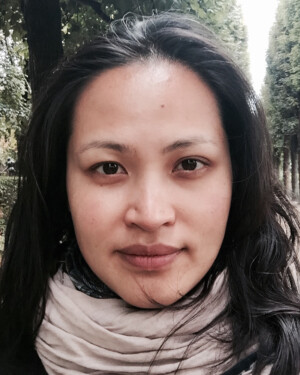 Giselle Ty is a theater and opera director who specializes in interdisciplinary, site-specific, and experimental work. She has directed for Houston Grand Opera, the Center for Contemporary Opera / National Sawdust, NYU Tisch School of Drama, Simpson College, Juventas New Music, Boston’s Guerilla Opera, and Harvard University. Engagements as associate and assistant director include productions with l’Opéra National de Bordeaux, Icelandic Opera, Boston Lyric Opera (Werther), Boston Symphony Orchestra/Tanglewood Music Festival, MIT Media Lab, Gotham Chamber Opera, and London’s Royal Opera House, Covent Garden. In addition to theater and opera productions, Ty’s recent projects include collaborations with the Peabody Essex Museum, where she was invited to create original work for the museum’s galleries and historic houses, and Invitation to an Empty Room an immersive experience developed through a residency with New Georges Theatre, where she is an affiliate artist. Ty studied orchestral music and art history at Northwestern University and has trained in various theater techniques with former resident artists at the American Repertory Theatre, SITI Company, and l’École Jacques Lecoq in Paris. Ty wishes BLO audiences, staff, and fellow artists many more happy returns to live music and theater.
Giselle Ty is a theater and opera director who specializes in interdisciplinary, site-specific, and experimental work. She has directed for Houston Grand Opera, the Center for Contemporary Opera / National Sawdust, NYU Tisch School of Drama, Simpson College, Juventas New Music, Boston’s Guerilla Opera, and Harvard University. Engagements as associate and assistant director include productions with l’Opéra National de Bordeaux, Icelandic Opera, Boston Lyric Opera (Werther), Boston Symphony Orchestra/Tanglewood Music Festival, MIT Media Lab, Gotham Chamber Opera, and London’s Royal Opera House, Covent Garden. In addition to theater and opera productions, Ty’s recent projects include collaborations with the Peabody Essex Museum, where she was invited to create original work for the museum’s galleries and historic houses, and Invitation to an Empty Room an immersive experience developed through a residency with New Georges Theatre, where she is an affiliate artist. Ty studied orchestral music and art history at Northwestern University and has trained in various theater techniques with former resident artists at the American Repertory Theatre, SITI Company, and l’École Jacques Lecoq in Paris. Ty wishes BLO audiences, staff, and fellow artists many more happy returns to live music and theater.
Julia Noulin-Mérat
Designer
Julia Noulin-Mérat | Designer
 Julia Noulin-Mérat is an American, French, and Canadian producer, designer and is the General Director & CEO of Opera Columbus. Noulin-Mérat is the creative director for Hong Kong-based More Than Musical and is the Artistic Advisor of Guerilla Opera. Previously, she was for 8 years the Associate Producer at Boston Lyric Opera. In addition, Noulin-Mérat has worked on over 400 opera, theater, and television productions, including 25 new operas, 22 new plays. Other projects include a TEDx talk on site-specific opera productions in the modern age for Opera Omaha, Neverland (China Broadway): a $20 million, 50,000 square immersive theater piece in Beijing based on Peter Pan directed by Allegra Libonati, a PPE friendly outdoor Fall and Spring Festival productions (the Atlanta Opera) directed by Tomer Zvulun, an immersive Pagliacci (Boston Lyric Opera) production complete with fairgrounds inside an ice rink directed by David Lefkowich and Playground (Opera Omaha) a National touring operatic sound sculpture in collaboration with composer Ellen Reid. Her work has been featured in Opera News, LiveDesign, the New York Times, and the Wall Street Journal to name a few. Noulinmerat.com
Julia Noulin-Mérat is an American, French, and Canadian producer, designer and is the General Director & CEO of Opera Columbus. Noulin-Mérat is the creative director for Hong Kong-based More Than Musical and is the Artistic Advisor of Guerilla Opera. Previously, she was for 8 years the Associate Producer at Boston Lyric Opera. In addition, Noulin-Mérat has worked on over 400 opera, theater, and television productions, including 25 new operas, 22 new plays. Other projects include a TEDx talk on site-specific opera productions in the modern age for Opera Omaha, Neverland (China Broadway): a $20 million, 50,000 square immersive theater piece in Beijing based on Peter Pan directed by Allegra Libonati, a PPE friendly outdoor Fall and Spring Festival productions (the Atlanta Opera) directed by Tomer Zvulun, an immersive Pagliacci (Boston Lyric Opera) production complete with fairgrounds inside an ice rink directed by David Lefkowich and Playground (Opera Omaha) a National touring operatic sound sculpture in collaboration with composer Ellen Reid. Her work has been featured in Opera News, LiveDesign, the New York Times, and the Wall Street Journal to name a few. Noulinmerat.com

Gail Astrid Buckley
Costume Designer
Gail Astrid Buckley | Costume Designer
 Acclaimed costume designer Gail Astrid Buckley is a two-time Elliot Norton Award winner for Outstanding Costume Design and has two IRNE Awards for Costume Design. Gail’s design work at Boston Lyric Opera includes productions of The Marriage of Figaro, Merry Widow, and Cosi fan Tutte, which she co-designed with John Conklin. 2019-2020 season credits include a reimagined, streamed version of A Christmas Carol for the Hanover Theatre, Pacific Overtures and Murder on the Orient Express for the Lyric Stage Company of Boston, Lifespan of a Fact at Gloucester Stage Company, and assistant costume designer on the popular Netflix film “I Care A Lot” starring Rosamund Pike, Peter Dinklage and Dianne Wiest. Her upcoming projects include assistant costume design for the film “About Fate,” starring Emma Roberts and currently in post production. Gail is a proud member of United Scenic Artists Local 829.
Acclaimed costume designer Gail Astrid Buckley is a two-time Elliot Norton Award winner for Outstanding Costume Design and has two IRNE Awards for Costume Design. Gail’s design work at Boston Lyric Opera includes productions of The Marriage of Figaro, Merry Widow, and Cosi fan Tutte, which she co-designed with John Conklin. 2019-2020 season credits include a reimagined, streamed version of A Christmas Carol for the Hanover Theatre, Pacific Overtures and Murder on the Orient Express for the Lyric Stage Company of Boston, Lifespan of a Fact at Gloucester Stage Company, and assistant costume designer on the popular Netflix film “I Care A Lot” starring Rosamund Pike, Peter Dinklage and Dianne Wiest. Her upcoming projects include assistant costume design for the film “About Fate,” starring Emma Roberts and currently in post production. Gail is a proud member of United Scenic Artists Local 829.
Molly Tiede
Lighting Designer
Molly Tiede | Lighting Designer
 Professional Lighting Designer Molly Tiede’s theatrical design credits include storied New York City venues such as the Gerald Lynch Theater, Abingdon Theater, The Sheen Center, DiCapo Opera, and Abrons Arts Center among others. Nationally, her credits include lighting design for Opera Colorado, Colorado University Opera in Boulder, Paramount Theater in NJ, Hettenhausen Center for the Arts in Saint Louis, and The Rose Wagner Theater in Salt Lake City. She has served as both associate and assistant in theatres and with companies such as the Walter Kerr Theater, The Vineyard Theater, Signature Theater, Labyrinth, George Street Playhouse, Indiana Repertory Theatre, Cleveland Playhouse, Boston Lyric Opera, Alley Theater, The Old Globe in San Diego, Juilliard Opera, The Santa Fe Opera, Roundabout Theater Company, Berkshire Theater Group, and Gotham Chamber Opera. Outside the theater, Molly’s extensive events design background includes assistant and lead design work on corporate events and private parties for clients including Target, the Brooklyn Marathon, Hamilton’s Tony Awards after party, Facebook and Instagram, and various music festivals. Molly is currently the Head of Lighting Design and the Co-Head of Production Design and Technology at Ohio University, in addition to her freelance lighting design work.
Professional Lighting Designer Molly Tiede’s theatrical design credits include storied New York City venues such as the Gerald Lynch Theater, Abingdon Theater, The Sheen Center, DiCapo Opera, and Abrons Arts Center among others. Nationally, her credits include lighting design for Opera Colorado, Colorado University Opera in Boulder, Paramount Theater in NJ, Hettenhausen Center for the Arts in Saint Louis, and The Rose Wagner Theater in Salt Lake City. She has served as both associate and assistant in theatres and with companies such as the Walter Kerr Theater, The Vineyard Theater, Signature Theater, Labyrinth, George Street Playhouse, Indiana Repertory Theatre, Cleveland Playhouse, Boston Lyric Opera, Alley Theater, The Old Globe in San Diego, Juilliard Opera, The Santa Fe Opera, Roundabout Theater Company, Berkshire Theater Group, and Gotham Chamber Opera. Outside the theater, Molly’s extensive events design background includes assistant and lead design work on corporate events and private parties for clients including Target, the Brooklyn Marathon, Hamilton’s Tony Awards after party, Facebook and Instagram, and various music festivals. Molly is currently the Head of Lighting Design and the Co-Head of Production Design and Technology at Ohio University, in addition to her freelance lighting design work.
Ronell Oliveri
Wig-Makeup Designer
Ronell Oliveri | Wig-Makeup Designer
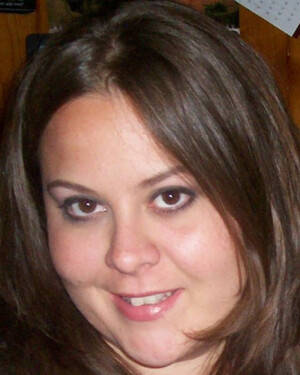 Ronell Oliveri has designed wigs and makeup for opera, theater, ballet, and film companies for the past 18 years including Boston Lyric Opera, Minnesota Opera, American Repertory Theater. She is the resident Wig and Makeup Designer for Opera Colorado, Opera Omaha, and Central City Opera. Oliveri was a 2007 Primetime Emmy Award nominee for her work in television. Her professional credits as a wig and makeup artist include engagements with Chicago Lyric Opera, LA Opera, Santa Fe Opera, Opera Theater of Saint Louis, and Boston Ballet. Her work can also be seen in several Broadway shows including Wicked, All the Way, and Waitress. Other recent engagements include Miller Theater’s Proving Up, Opera Omaha’s The Capulets and the Montagues, and Opera Colorado’s Tosca.
Ronell Oliveri has designed wigs and makeup for opera, theater, ballet, and film companies for the past 18 years including Boston Lyric Opera, Minnesota Opera, American Repertory Theater. She is the resident Wig and Makeup Designer for Opera Colorado, Opera Omaha, and Central City Opera. Oliveri was a 2007 Primetime Emmy Award nominee for her work in television. Her professional credits as a wig and makeup artist include engagements with Chicago Lyric Opera, LA Opera, Santa Fe Opera, Opera Theater of Saint Louis, and Boston Ballet. Her work can also be seen in several Broadway shows including Wicked, All the Way, and Waitress. Other recent engagements include Miller Theater’s Proving Up, Opera Omaha’s The Capulets and the Montagues, and Opera Colorado’s Tosca.

Levi Marsman
Choreographer
Levi Marsman | Choreographer

Boston choreographer Levi Philip Marsman, is a graduate of the Ailey/Fordham B.F.A. Program and former member of Ailey II. He is currently on faculty at Urbanity Dance and the Ailey School and has been Artist-in-Residence at Boston Arts Academy and Boston Conservatory at Berklee and a Teacher-in-Residence for Urbanity Dance. As a choreographer, Marsman created works for Dallas Black Dance Theatre: Encore!, Boston Youth Moves, Endicott College, Walnut Hill School for the Arts, the Joffrey School, Boston Conservatory at Berklee, The Ailey School, and many others.
Marsman was the first recipient of the Ballet Inc. Emerging Choreographer Award and was one of two guest choreographers to create a new work for Urbanity Dance in Boston in their “Urbanity NeXt” Project in 2017. He was also named choreographer and movement director for Commonwealth Shakespeare Company’s 2019 production of “The Tempest” on the Boston Common. In 2020, The Isabella Stewart Gardner Museum commissioned him to create a new work entitled ‘Colorful’ in conjunction with their exhibit, “Boston’s Apollo.” His latest work, “some kind of peace,” closed out Richmond Ballet’s 2021 season.
Leader Bank Pavilion
290 Northern Ave | Boston, MA | 02210
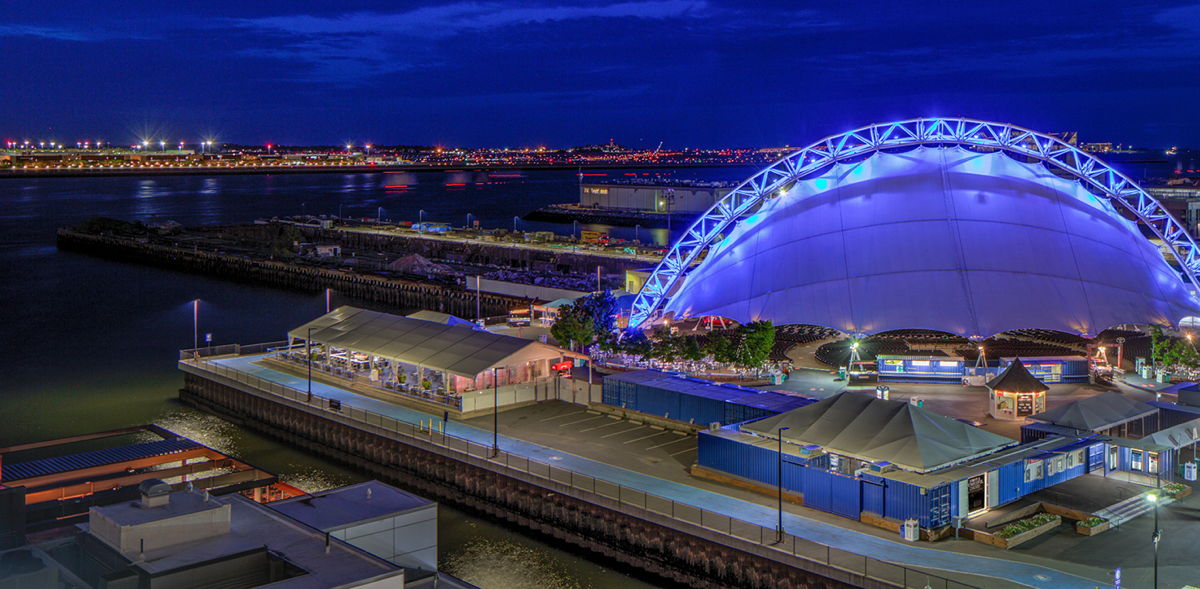
Located on Boston’s iconic waterfront in the Seaport District, Leader Bank Pavilion is an open-air, covered amphitheater providing a state-of-the-art, comfortable live performance experience.
ACCESSIBILITY
All sections of Leader Bank Pavilion are accessible via flat walkways.
Restrooms are located in the concessions area of the venue.
Guests that require assisted listening devices can contact Leader Bank Pavilion prior to the event to arrange for a device.
Click here for more information on Leader Bank Pavilion’s accessibility support.
FREQUENTLY ASKED QUESTIONS:
Q: I don’t have a smart phone. How can I access my tickets?
A: If you have a cracked screen or are just not using a smart device – no problem. Simply visit the Pavilion box office at the venue upon arrival. Have your ID and order number handy and you will be issued a physical ticket.
Q: Can I bring my normal sized purse? Are there any other restrictions on what I can bring in?
A: The venue requires that any bag is either a small clutch bag (4.5” x 6.5”) or a clear plastic bag no larger than 12” x 6” x 12” with a single compartment. No backpacks are allowed. Small umbrellas, small blankets, one sealed bottle of water, an empty clear water container, and a small clear bag of snacks can all be brought into the venue.
Q: What if it rains?
A: While the Leader Bank Pavilion is an outdoor venue, it does have a large tent covering. All shows will go on rain or shine.
Q: What is the Covid policy for this event?
A: You can read our full policy is at blo.org/health-and-safety.
Q: Where can I park if I am driving to the venue?
A: Parking is available for Leader Bank Pavilion patrons at the Seaport Hotel Garage within a short walk of the Pavilion. The Seaport Hotel Garage can be accessed from Seaport Boulevard. The Seaport Boulevard entrance is at the intersection of Seaport Boulevard and B Street, three blocks before the Leader Bank Pavilion. Additionally, Leader Bank Pavilion has partnered with ParkWhiz to offer other easy and reliable options.
Q: What restaurants are by the pavilion?
A: The Seaport has a reputation for lots of dining options! From Boston Magazine picks to Eater Boston’s Guide to the Seaport, there is something for everyone. Click here for a list of nearby restaurants. These restaurants include:
Del Frisco’s Double Eagle Steakhouse
And more!
Q: Can I still subscribe to the BLO 2021-2022 season?
A: Yes! You can use BLOSUB at check out for Cavalleria and we will contact you with more subscription information.
Boston Lyric Opera COVID-19 Policies
Boston Lyric Opera continues to monitor evolving conditions and guidance during the COVID-19 pandemic. The health and safety of our community is our top priority. We have implemented a series of procedures recommended by BLO’s Health Task Force for Opera Artists to ensure that all of our audiences, artists, and staff have a comfortable and enjoyable experience.
For BLO’s October 1 and 3 performances of Cavalleria Rusticana at Leader Bank Pavilion, we are implementing a combination of vaccination, testing, and masking requirements designed to provide a safe and comfortable opera-going experience.
For all patrons attending performances at Leader Bank Pavilion, BLO will require the following:
- Proof of vaccination or proof of negative COVID test result
-
- Patrons must either provide proof of vaccination or a PCR test taken within 72 hours of the performance, or an antigen test taken within the last 24 hours.
- Proof of vaccination or negative COVID test can be provided by showing a physical copy or photo of your vaccination card or test results.
- Face Mask Requirements
-
- Face Masks are required for all patrons.
If you are a ticket holder and are feeling unwell, please contact boxoffice@blo.org to discuss your ticketing options. BLO is committed to flexibility this season and will provide assistance for patrons who are feeling sick or need to pause their return to the theater.
BLO will continue to monitor conditions and will provide health and safety updates as needed.
“A Slice of Life:” Cavalleria rusticana
By Cori Ellison
Pietro Mascagni’s Cavalleria rusticana (1890) and Ruggero Leoncavallo’s Pagliacci (1892), written just two years apart, are the ham and eggs of opera. Each are short operas that have almost always been presented as a double bill, affectionately called ‘Cav/Pag’ by opera professionals, since their first joint performance in Rome in 1893. Cavalleria and Pagliacci have made a natural pair, as both are operas portraying a humble Southern Italian working-class community on a Roman Catholic feast day, and both concern love triangles that turn violent and deadly. Yet it is fascinating to separate these twins now and again. Boston Lyric Opera presented the circus of Pagliacci on its own exactly two years ago, and now, with the Company’s return to live opera following the pandemic, shines the spotlight on Cavalleria rusticana.
In 1889, the young Tuscan composer Pietro Mascagni decided to enter a competition for one-act operas sponsored by the Milanese music publisher Edoardo Sonzogno, open to young Italian composers who had not yet had an opera performed on stage. When Mascagni asked his long-time friend Giovanni Targioni-Tozzetti, a poet and professor of literature, to write a libretto for him, Targioni-Tozzetti suggested basing it on “Cavalleria rusticana,” a popular short story by the Sicilian realist author Giovanni Verga. Targioni-Tozzetti enlisted his colleague Guido Menasci to help him. In all, 73 operas were entered in the competition, but in March 1890, Mascagni’s Cavalleria rusticana was selected as one of the final three.
The premiere of Cavalleria rusticana at the Teatro Costanzi in Rome in May 1890 is the stuff of legend, with Mascagni taking forty curtain calls and capturing First Prize. The opera’s phenomenal popularity began immediately, and it easily remains the best known of Mascagni’s fifteen operas. Striving for a frank, intense, swift, and economical musical language in which to tell this turbulent tale, Mascagni and his librettists gave birth to the short-lived but wildly popular and endlessly influential operatic style called verismo in Italian opera.
Like Hip hop, Gospel, Salsa, Klezmer, Country Western, Beat poetry, Magic realism, Op art, or any musical style or cultural movement, verismo sprang directly from a community and its responses to its social and economic conditions.
Verismo—Italian for “realism”—was a powerful literary, theatrical, and musical genre that expressed the circumstances, passions, and preoccupations of Southern Italians at the turn of the twentieth century. In the Prologue to Pagliacci, Tonio states that the author has sought to portray “uno squarcio di vita,” (“a slice of life”). The immediate influences of verismo lie in naturalisme, or naturalism, a late nineteenth-century literary movement kindled by French novelists Gustave Flaubert and Emile Zola. After centuries of literature revolving around the upper classes, naturalism spotlighted the common people and la vie quotidien. It strove to look at the world with a cold, objective eye, focusing on the dark, harsh, violent side of life, often with the goal of social reform. Naturalist writers tried to realistically portray the current era of political, industrial, and social revolution that caught Europeans off guard and created an atmosphere of uncertainty and alienation, especially among the lower classes.
This French naturalist movement strongly influenced the literature of other nations, especially Italy, where this style was called verismo or realism. Verismo brought new prominence to southern Italy, where masses of artists rose to depict the hardships of life in the Mezzogiorno—the traditional name for the sunny south of Italy, encompassing the southern portion of the familiar boot-shaped Italian Peninsula, including the regions of Abruzzo, Basilicata, Calabria, Campania, Molise, Puglia, and the two large islands of Sicily and Sardinia. One of the major figures of Italian verismo literature was Giovanni Verga, whose short story, “Cavalleria rusticana” (1880) or “Rustic Chivalry,” was purportedly based on an actual event. So great was its impact that the famous Italian actress Eleanora Duse asked Verga to dramatize it so that she could play the female lead. The resulting play, Cavalleria rusticana, was then adapted for the opera stage not only by Mascagni, but also by the Italian composers Stanislao Gastaldon (Mala pasqua!, 1890, premiered a month before Mascagni’s version, at the same theater!) and Domenico Monleone (1907).
Verismo permeated Italian literature, art, theatre, and film from the late nineteenth through the early twentieth century, but perhaps its most lasting embodiment has been in the immensely popular operatic works of Puccini, Giordano, Cilea, and others, whose earthy plots and characters, violent action, swift pace, declamatory vocalism, and colorful and emphatic orchestration still pack opera houses. Though pure verismo was relatively short-lived and soon challenged by the artistic movements that followed, many hallmarks of its style lasted well into the twentieth century, most notably in the films of Italian neorealist directors such as Vittorio di Sica and Roberto Rossellini and, remarkably, in American operas by such composers as Gian Carlo Menotti, Samuel Barber, and Carlisle Floyd.
Cavalleria rusticana and verismo also made their way into American popular culture. In the climactic scene of The Godfather: Part III (1990) a performance of Cavalleria rusticana in Palermo, Sicily, with Michael Corleone’s opera-singer son Anthony as Turiddu, provides an ironic counterpoint to Vincent Corleone’s vengeance against his family’s enemies and an assassination attempt on Michael Corleone. The opera’s symphonic Intermezzo is also heard in the final scene as a backdrop to Michael’s lonely death. A decade earlier, director Martin Scorsese had also used the Intermezzo in the opening of Raging Bull (1980).
It’s not surprising that Cavalleria rusticana, a succinct opera with the tone and impact of a fast-moving popular thriller, still packs theaters today. And the moral questions it leaves in its wake—the dangerous effects and deadly consequences of infidelity and jealousy—will never cease to feel timely.
— Cori Ellison has served as staff dramaturg at New York City Opera, Glyndebourne Opera, and Santa Fe Opera, and is a member of the Vocal Arts faculty at The Juilliard School
The Reviews are In!
BOSTON GLOBE
“Boston Lyric Opera’s ‘Cavalleria rusticana’ is a triumph!”
BOSTON MUSICAL INTELLIGENCER
“It was impossible to tear your eyes (or ears) away from Chelsea Basler’s Lola. Her magnetic stage presence and broad, open legato approach to the role of the town flirt helped the audience to understand how Turiddu might be torn between two women.”
“Javier Arrey captured the audience with his opening Prologue and brought new depth to his role as a cuckolded husband.”
EDGE Media
“BLO must be credited for persevering during this extended period of uncertainty and treating us to this well-sung ‘Cavalleria Rusticana.'”
Boston Classical Review
“Michelle Johnson was the star of the evening, her beaming soprano finding every nuance of the love-torn Santuzza.”
For press images, please visit
Cavalleria Rusticana Media Kit
Cast Photos
Season artwork created by Myung Hee Cho.


